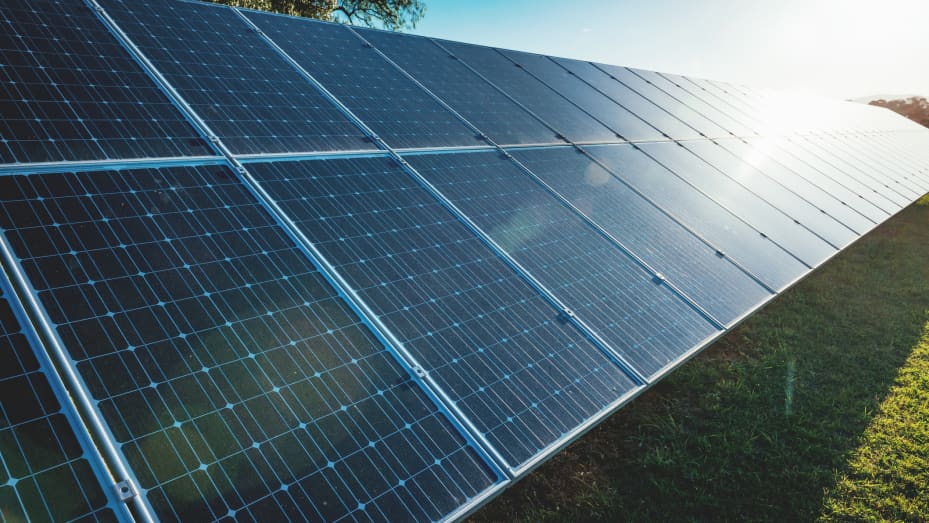PUBLISHED FRI, JUL 23 2021
Anmar Frangoul
KEY POINTS
Swedish energy firm Vattenfall has been given a permit to build the project in the Netherlands.
The idea of deploying solar panels on farmland has been around for many years.

Drazen_ | E+ | Getty Images
Swedish energy firm Vattenfall has been given a permit to build a project in the Netherlands that plans to combine solar power with farming, in the latest example of how renewables and agriculture can potentially dovetail with one another.
In a statement earlier this week Annemarie Schouten, Vattenfall’s head of solar development for the Netherlands, explained how the project would “alternate rows of panels with strips where various crops are grown for organic farming.”
The pilot, known as Symbizon, is slated to last four years and be located in Almere, to the east of Amsterdam. Funding has come from the Dutch Ministry of Economic Affairs.
Schouten said that double-sided solar panels would be used in order to ensure “sufficient light yield.” Such a setup would also enable the panels to “catch the reflected light from the soil, the crops and the adjacent rows and use it to produce solar energy.”
While plans have taken a step forward, Vattenfall has yet to confirm if the project will actually progress. A decision on this is expected by the end of 2021. If it does get the green light, construction work will start in 2022.
A wide range of stakeholders are set to be involved if the scheme is fully realized. These include independent research organization TNO, which would develop a “solar tracking algorithm” to track energy and crop yields, among other things.
The idea of deploying solar panels on farmland has been around for many years. One strand of this is called agrivoltaics, which also goes by the name of agrophotovoltaics.
According to Germany’s Fraunhofer Institute for Solar Energy Systems ISE, agrivoltaics “enables the dual use of land for harvesting agriculture and solar energy.”
The idea behind the concept traces its roots back to the early 1980s and is attributed to Adolf Goetzberger, founder of Fraunhofer ISE, and his colleague Armin Zastrow.
According to the Institute, agrivoltaic installations grew from around 5 megawatts in 2012 to approximately 2.9 gigawatts in 2018.
Solar panels can also be used to help those working in agriculture with their day-to-day activities. The Food and Agriculture Organization of the United Nations, for instance, has noted that “solar technologies are becoming a viable option for both large and small-scale farmers.”
In 2020, CNBC’s “Sustainable Energy” reported on how one Zimbabwe based farmer, Cheneso Ndlovu, was using solar tech to help her grow produce.
“We do gardening using a solar powered borehole for watering,” she said.
“We planted tomatoes on a small patch we were watering and we realized it was thriving, so we decided to grow other vegetables,” she added. “We use the water for other domestic needs like washing.”
No comments:
Post a Comment